NOTE: I have made some changes since the original question, the number of columns is 114 not 45, this may affect some of the answers below.
I'm working on a project with a large LED matrix I'm making. I'm using 114 columns of LEDs and need a way of iterating over the columns in such a way that I can use minimal number of pins from my AVR.
Back when I was in school I remember we used to use decade counters, the 4017, I seem to read now that these are obsolete, and they seem to have been replaced with bcd counters. That's all well and good, but I need pins, not efficiency, 4 bit bcd output doesn't help me, I need 114+ connections I can iterate over.
So, what do I use? I need something along the column length to switch them in sequence.
Below is a quick SPICE schematic I threw together of how I want to set this up, the difference is that my real project will have 28 LEDs in each column and 114 columns, R1-R28 and C1-C114.
I have 74HC595 8 Bit shift registers on the Rows, clocking in data, all I need is a suitable device to switch high the 114 transistors sinking the current.

